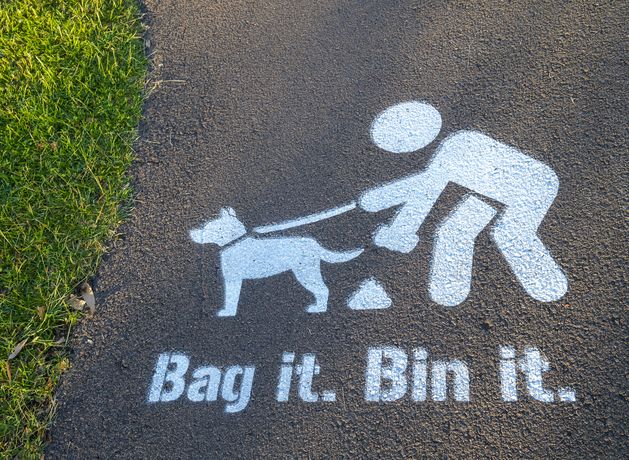Dog poo infections most likely at park gates and playgrounds, Irish researchers find


Their study of Dublin parks found most had roundworm eggs in their soils, with lab analysis showing the majority were the strain found in dogs.
The greatest concentration of eggs was at the entrance to the parks which tallies with anecdotal evidence from dog owners that their pets often defecate as soon as they reach the park.
However, the second most common spot was in playgrounds within the parks, including those fenced off with signs saying dogs were not allowed.
Roundworm infection or toxocara is relatively common in dogs and often they carry it without symptoms.
Humans can also pick it up without effect but in rare cases it can cause fever, skin rashes, pneumonia and even sight loss.
The study carried out by Trinity College Dublin’s School of Natural Sciences examined almost 1,000 soil samples from 12 public parks around Dublin city.
Nine of the parks produced samples with eggs and almost all the eggs were viable with potential to infect..
Lead researcher, Dr Jason Keegan, said while the findings might sound worrying, they could help show how best to tackle the problem.
“This new research specifically pinpoints the hotspots in Dublin’s public parks where egg counts are highest in soil samples, and that tells us where we need to target our intervention efforts,” he said.
“By providing more signage, bins and a means to clean up after dogs in these locations, we could reduce the level of contamination.”
The study found fewer roundworm eggs than studies 30 years ago when the problem of stray dogs was greater.
However, it also illustrated that dog-fouling in public places remains an issue despite greater awareness around it.
The key results included:
“Toxocara is one of the most common parasitic infections across the globe and while there are many potential routes of infection, it is widely believed that the most common one for people is coming into contact with soil containing infective eggs and then accidentally ingesting them,” said Dr Keegan.
The study looked at initiatives in other countries, and found that allowing dog owners use any bin, instead of waiting to find a dedicated dog poo bin, reduced incidences of fouling.
“Many dog-fouling reduction interventions are not assessed for their effectiveness after implementation, so it’s imperative that such an assessment is built into any plan in the future,” said Dr Keegan.
“Of the assessments that have been completed, we know posters made by schoolchildren can be useful.
“Involving the local communities most impacted by dog faeces in their recreational areas could be an opportunity worth exploring.”
Recent Posts
Dog recovering well after being shot in head, rescued by Cincinnati organizations
Dog recovering well after being shot in head, rescued by Cincinnati organizations Updated: 6:52 PM…
Tragic Fire at Happy Cat Sanctuary Kills Rescuer and More Than 100 Cats
A tragic fire at a Long Island animal sanctuary has left an entire community in…
7 Natural Ways to Support Your Dog’s Cognitive Function Without Medication
Midjourney Cognitive decline is common in senior dogs, but there are ways to support their…
8 Whole Foods That Can Help Lower Inflammation in Senior Dogs
Midjourney As dogs get older, inflammation becomes more than just a passing issue—it can lead…
Man Thought He Received His Dog’s Ashes, Then Came a Call From Animal Control
A Baltimore-area man is left devastated after learning that his beloved dog, who he believed…
Vermont Shelter Saves Cat and 2 Dogs in Real-Life ‘Homeward Bound’ Rescue
Central Vermont Humane Society found two dogs and a cat wandering togetherThe shelter is calling…

